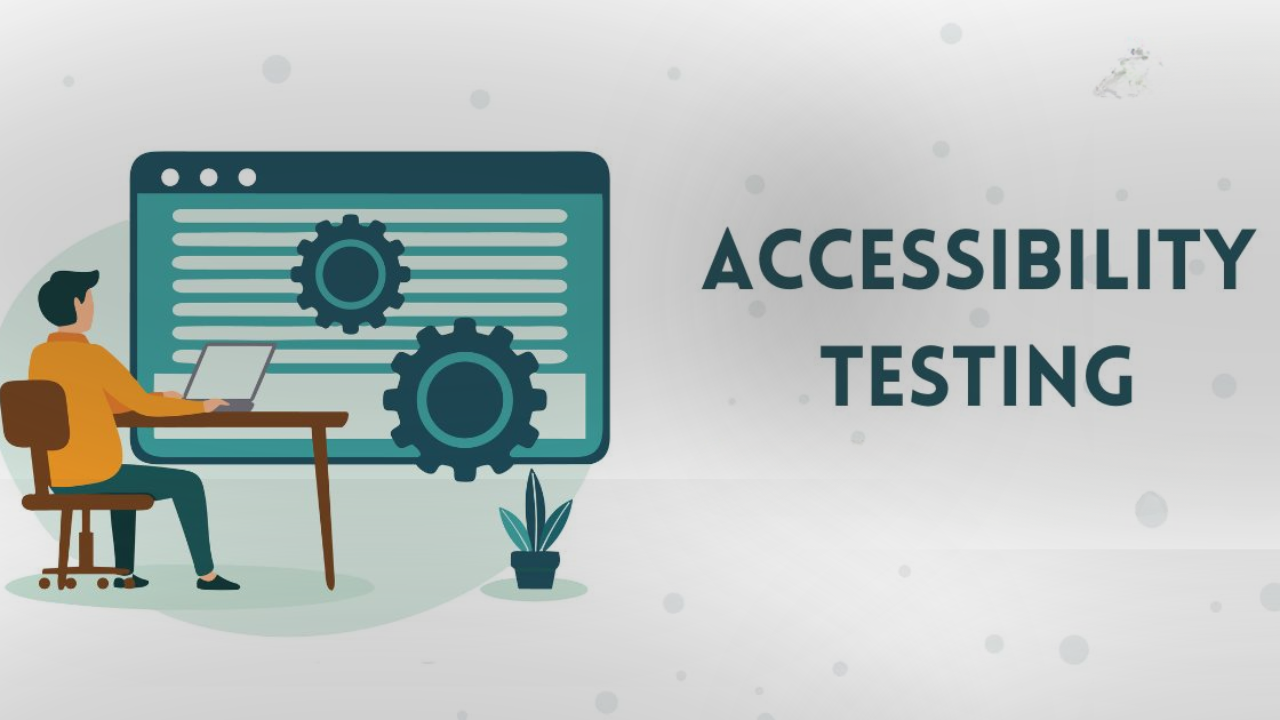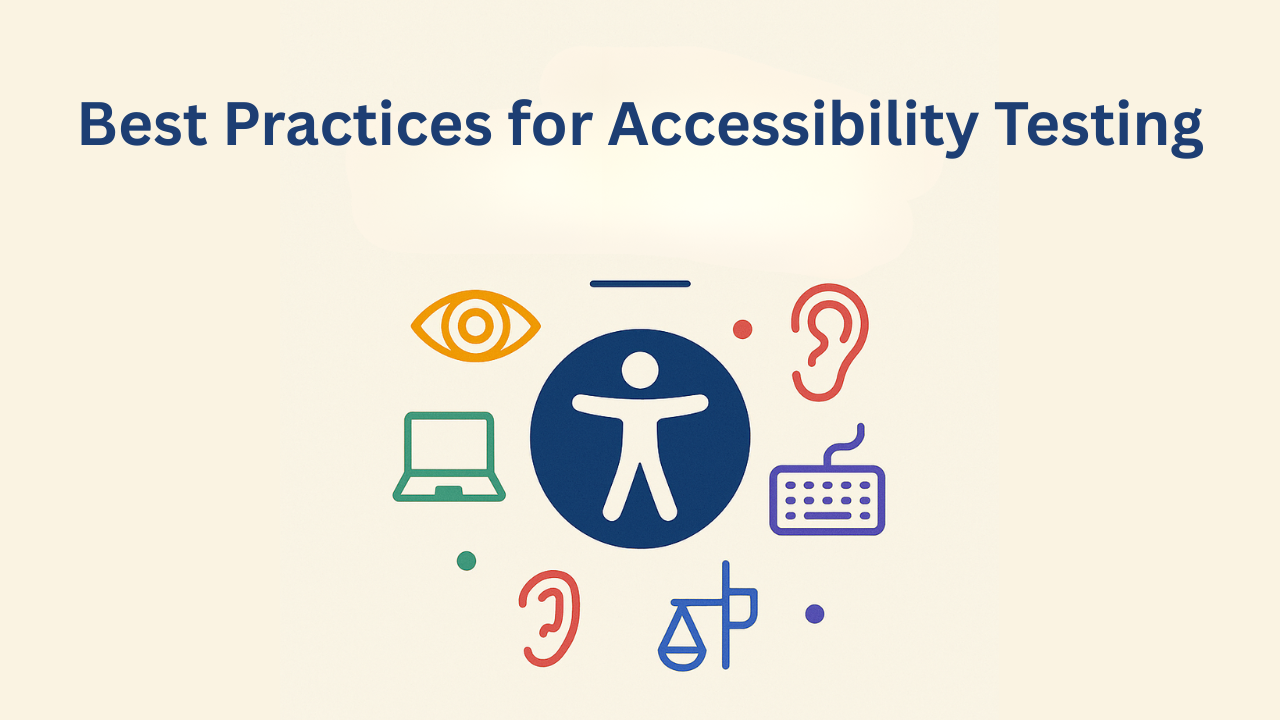Accessibility Testing: Tips and Best Practices
The question of accessibility is no longer a feature that can be added to the list of things to be considered when creating and developing websites and other digital products. Accessibility is a must. There are millions of individuals in the world who live with one form or another disability, which may be visual, hearing, motor, and/or cognitive disability. To these users, when websites and applications are available, the experience may be empowering, but when websites and applications are available, the experience may be frustrating also. Accessibility testing encourages the idea that no one should be unable to access, utilize, or have digital experiences despite ability.
This blog will take you through the concept of accessibility testing (and why it is important), practical tips and best practices that you can implement in the current day.
What Is Accessibility Testing?
Web accessibility testing is a procedure that allows assessing websites, applications and electronic materials to ensure that they can be accessed by individuals with various disabilities. It verifies that a product is accessible to people with disabilities with Web Content Accessibility Guidelines (WCAG) standards and legal standards such as the Americans with disabilities act (ADA) or the European Accessibility Act (EAA).
The idea is straightforward: open barriers in order to enable everybody to access digital products in a similar manner. It may imply that it can be possible to make text readable by screen readers, videos have captions, or forms can be filled in only by using a keyboard.
Why Is Accessibility Testing Important?
Inclusivity
It is not only compliance that makes accessibility. It is the development of digital experiences that are inclusive. With the availability of websites, persons with disabilities are able to make purchases online, receive education, seek employment, or interact with others without restrictions.Legal Requirements
Laws exist in many countries in which digital access is mandatory. Failure to comply may result in legal suits, fines and damaged reputation. Legal risks are minimized by the accessibility testing.Better User Experience for All
Design accessibility enhances the usability of all people. Clarity, readability and organized content are advantages of good navigation to all users and not just the disabled. Consider captions in a noisy room-of benefit to everyone, not only to the hearing impaired.SEO Benefits
Clean, structured and descriptive contents are appreciated by search engines. Elements such as correct headings structure, alt tags in pictures and semantic HTML not only assist the screen readers but also the search engines.
Types of Accessibility Testing
Accessibility testing can be manual, automated, or a mix of both. Each approach has strengths and limitations.
Manual Testing
Real human checks are involved in manual testing. Screen readers, keyboard navigation, and manual judgment are used by testers to discover problems that automated tools miss in the form of bad descriptions of links or incomprehensive layouts.Automated Testing
Axe, Lighthouse, or WAVE are the tools that scan a page within several seconds to indicate its most frequent problems, such as the lack of an alt text, insufficient contrast, or unoccupied links. They are quick and handy yet they cannot detect all the problems.User Testing with People with Disabilities
The final one is real-user testing. When you sell products to disabled people, their practical experience will show the problem that cannot be completely simulated with any program or automated tools.
Tips for Effective Accessibility Testing
Let’s break down some practical tips you can use when testing for accessibility.
1. Start Early, Not at the End
The accessibility should not be a follow-up. Waiting until launch to test will be costly and time-consuming in fixing problems. Rather, encompass accessibility testing in all the phases, which include design, development, and content production. Initial fixes are time and cost saving.
2. Follow WCAG Guidelines
The global standard is the WCAG framework. It is founded on four principles Perceivable, Operable, Understandable, and Robust (POUR). These values advise designers and developers to develop content which is user friendly. Remember about them in the course of testing.
3. Use a Combination of Tools
There is no tool that is comprehensive. Automated checkers help to mark apparent problems, and manual checks are done to measure the actual user experience. Such a combination strategy is more dependable.
4. Test with Assistive Technologies
Screen readers such as NVDA or JAWS, and voice recognition programs such as Dragon NaturallySpeaking, give you an idea of what users with disabilities go through your site. The use of these tools will reveal how easy your product is to access.
5. Pay Attention to Keyboard Navigation
Other users depend fully on a keyboard rather than a mouse. Ensure that everything is usable with the key board, menus, forms, buttons etc. Check the navigation with the use of the Tab key.
6. Check Color Contrast
Low contrast between text and background causes poor reading by individuals with low eyesight or color blindness. Check contrast with checkers to make sure that the text is readable. WCAG suggests that the normal text should have a 4.5:1 ratio.
7. Provide Alternatives for Non-Text Content
There must be descriptive alt text in images. There should be captions or transcripts in videos. Summaries should be provided in charts. These options make sure that those who do not see or hear some information are in a position to grasp it.
8. Simplify Forms
Forms are often barriers. Labeling should be understandable and error messages should be descriptive and all the fields should be accessible through the keys board. Give useful instructions to avoid stalling of users.
9. Test Responsiveness and Zoom
Users may zoom in up to 200% or more. The content must also be understandable and usable even when zoomed in. Test on other devices, as well as mobile, tablet, desktop, to make sure that accessibility is available across platforms.
10. Involve Real Users
Provided the option to offer people with disabilities to test your product. Their experience in life is priceless. They have the capability to identify the small problems such as the use of incomprehensible language or navigation pitfalls that other users may not notice.
You can also explore these top tools for testing web accessibility to quickly identify and fix common issues.
Best Practices for Accessibility Testing
Beyond the tips, here are some best practices to make accessibility testing a sustainable habit.
Make Accessibility Part of the Culture
The developers are not the only ones responsible. Accessibility is also something that should be of concern to designers, content creators and managers. Train your staff and achieve collective responsibility.Document Issues Clearly
Reporting the accessibility bugs, explain them in straightforward words. Explain what the problem is, its significance and the impact on the users. Be able to give examples or screen shots. This assists teams in correcting problems in a speedy manner.Retest After Fixes
Accessibility is ongoing. Fix problems, retest to verify that they have been fixed. The sustained testing makes the improvements permanent.Automate Where Possible
Implement automated tests on accessibility to the sites as a component of CI/CD. In this fashion all the code updates will be verified to be accessible prior to deployment.Stay Updated on Standards
The standards of accessibility develop. New guidelines are added on WCAG 2.2 and subsequent versions. Keep updated to make your web site not be left behind.Think Beyond Compliance
Adhering to guidelines is not the goal, but a starting point. The actual objective is to make digital experiences to be inclusive, attractive and empowering.
Common Accessibility Pitfalls to Avoid
Leveraging on automated tools.
Vague link text should be used; such as, Click here or Read more.
Neglecting the accessibility of mobile.
Too complex navigation menus.
Use dummy form labels, rather than actual form labels.
Failure to recall video and audio transcripts or captions.
These small mistakes add up to big barriers. Being aware of them helps prevent exclusion.
Conclusion
Accessibility testing is not an idea concerning the number of compliance boxes one can check. It is concerning the development of a digital world where inclusion is appreciated. Once the websites and apps are open, they are not just accommodating to people with disabilities, but they simplify the online experience.
This can be done by providing websites accessible training and making the teams learn the best practices and inculcate inclusivity in each aspect of development. This is by being early, doing the appropriate things, adhering to WCAG standards and engaging the actual users in order to verify that your online presence is friendly to everyone.
The web can be made a more inclusive place, which is a lifelong process, however, the more we do, the closer we are to a better digital world. Accessibility testing is core with respect, respect towards diversity, respect towards equality and respect towards human dignity. Such respect should be the main component of any digital experience that we create.
Have Questions?
We Are Inclusive Web
We work with our clients to simplify digital accessibility to ensure your web and digital applications are ADA compliant and accessible to all your users. If you’d like to talk about your digital accessibility, you can email us at matthew@inclusiveweb.co, leave us a note here, or schedule a call here to discuss. Let’s make the web inclusive to all!






